Scalable Dolby Atmos Music System
Bob Fairbairn
December 1st, 2022 Speaker Install
December 4th, 2022 Field Trials
December 15th 16th, 2022 Operational
Over the past three years, I have been reducing complexity in my 2-channel systems, and one of the ways I have done that is by using “powered” speakers. My primary system has migrated through several brands, including Kii Three, Dutch and Dutch 8C, and several others. I am currently using a pair of Heavenly Soundworks 517 stand-mount speakers. The digital system is an Antipodes DX-3 with a Topping DDC feeding the speakers over SPDIF. There is also a Modwright Transporter, A WiiM Mini, and a Teac CD Player, but who is counting?
I feel like one of my kittens, Lucy chasing her tail; there is no end to dizziness and eventual collapse in her future.
My basement/test system has a TV, a Dali Sound hub, and their Callisto 2c wireless speakers. I was using a Rel T5x subwoofer for fill-in and gaming! This project eliminates that system but does not replace the gaming stuff.
I have written about almost all of the systems that have been part of my musical experience here on Audiophile Style so look for my other articles (link).
All of the above is so Yesterday!
This project has speaker gliders, door stops, and chairs. Along with other family members’ needs, like opening closet doors. And a homage to Wall·E.
Why Dolby Atmos?
I could blame the COVID pandemic for taking away the live music experiences I still do not feel safe going to. I could blame my FOMO or my Tinkerer mentality. While those are part of my desire, they are not primary. The experience was and is the main driver. When I go to the symphony or other concerts, I come home knowing that I cannot recreate that experience, and it is not just the pipe organ. Yet there is hope!
At AXPONA 2022, there was a demo from TigerFox360. They have developed a wrap-around sound-reflecting wall that sounds interesting, providing a surround experience. Rick O’Polka, who runs the company, is very passionate about his product. I have one here, and it is thought-provoking. There is a road I am traveling, and the Immerse 360 Pod is on that road. I have several more steps that have to happen first. Watch for an article early next year.
Chris has been developing his AUDIO ONLY Dolby Atmos system and writing about it with much commentary about the process, the experience, and his feelings! His system design philosophy can be implemented in so many ways at so many price points that I had to start down the path. Besides, he is not amenable to spare live-in audiophiles.
I regularly listen using Apple Music to play Dolby Atmos music on my AirPods MAX and the new AirPods PRO 2. The experience there is the first course of a fine meal; there is much more to come.
I have a Sonos ARC Sound Bar system to pair with the family room TV, which has expanded my view of this world, including the broadcasts from the Berlin Philharmonic. This system is for TV viewing and only takes the experience so far. Being in the center of the living space does not allow concentrated music listening.
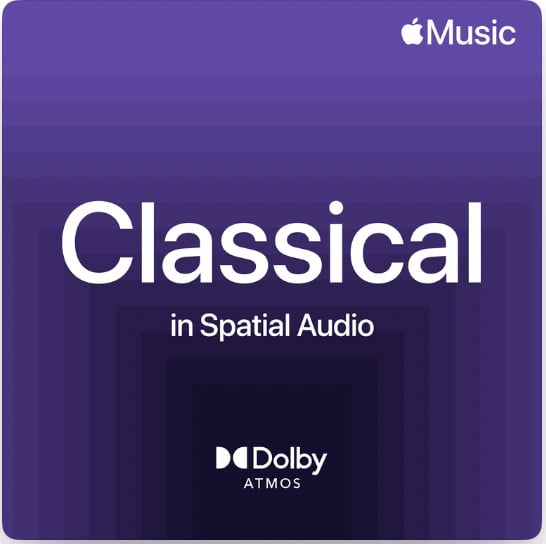 I see some of the promises of Dolby Atmos in three ways. One is to do the best possible job of reproducing that experience of live music for everyone.
I see some of the promises of Dolby Atmos in three ways. One is to do the best possible job of reproducing that experience of live music for everyone.
Classical in Spatial Audio: Apple Music Classical
 Another, and rather exciting, is to allow the artist to paint musically in three dimensions. The new Brian Eno album is a beautiful example.
Another, and rather exciting, is to allow the artist to paint musically in three dimensions. The new Brian Eno album is a beautiful example.
Brian Eno FOREVERANDEVERNOMORE
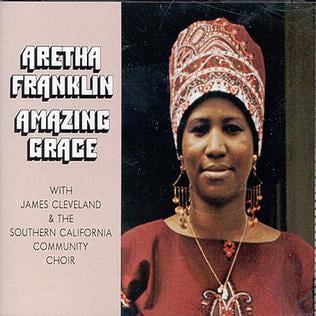 The third is aptly demonstrated in a live recording from 1972 of Aretha Franklin singing live at the New Temple Missionary Baptist Church.
The third is aptly demonstrated in a live recording from 1972 of Aretha Franklin singing live at the New Temple Missionary Baptist Church.
Aretha Franklin: Live at New Temple Missionary Baptist Church
Listening on 2-channel can be a pale imitation of reality. In the Dolby Atmos mix, you are with Aretha in the church, RIGHT THERE! I do not know how it was re-mixed, but I have very high hopes that more great music from the past can be brought to us with that level of care and experience.
I have started two playlists on Apple Music for this project. One is a list of two-channel tracks that started driving me to Dolby Atmos. The second is the beginning of some Dolby Atmos favorites.
NOTE that my Apple Music playlists are evolving, and things are still changing.
This has been my back story. I hope it sets the stage for what will come next— building a Dolby Atmos music system from scratch.
The Bleeding Edge
Before we discuss my project, I need to talk about music in Dolby Atmos format. Dolby Atmos has multiple supported data formats. Some are lossy, and some are lossless. Apple Music is lossy. You can get lossless files, but it requires some research or BluRay Ripping, and that is worth it! Do not get me wrong; Apple Music sounds terrific! It could be your primary Dolby Atmos streaming source, as it is mine.
Remember that with Dolby Atmos, you are at 24 bit / 48 kHz. That is the standard. In my case, there are 12 channels of data to the DAC running at the same time over USB.
There is a minimal set of Dolby Atmos music available. It is growing daily, with most new releases having two-channel and Dolby Atmos; Because of Apple Music. Also, at this time, to the best of my knowledge, the ONLY internet streaming service that will play Immersive audio on a desktop computer is Apple Music.
There is a dearth of knowledge out there. We are treading new ground and slowly drawing a map of the minefield for others. This article and the series from @The Computer Audiophile are our first stake in the ground documenting this revolution in music playback.
We are up against the same battles that happened in the mono-to-stereo transition. As @The Computer Audiophile says, it is akin to the start of computer-based audio.
My Dolby Atmos System Marathon
Training for the program
This has gone from a little nugget in the back of my brain — Apple Music now has Dolby Atmos — to a full-on project to try to avoid the punji-stake traps in this process. I am just getting to know the terminology, the goals of Dolby Atmos, and the work involved. I have had to pay Google to turn off the ads on YouTube so that I could make better progress. Ok, that is a fib; I hate what the web has turned into.
Location - Location - Location
I work backward in system design to what many audiophiles think. The room is first; where the heck is this going to go, and how does it impact the family?
I initially wanted to set this system up in the Family Room as a TV add-on. The requirements for an Audio Only system are much simpler than those of a system that includes Video. But, the further I went into the planning, the more I realized the need to move to a different location before attempting to integrate the system into a fully finished space. In addition, this would limit most of my music listening because someone else wants to watch TV. The room I will be using is my main finished basement space, about 12 x 20 ft but will be constrained to about 15 feet on the long side. It has a drop ceiling from which we can mount the four ceiling-mounted speakers. This is a near-field to mid-field system for one or two listeners.
Warning: lanes merge ahead
This system is a union of Pro Audio and Home Audio, with passive freestanding and in-situ speakers. There is no TV, there is no HDMI, and no receiver.
My system is a dedicated M1 Mac Mini connected to a Pro-Audio interface from MOTU, the 24AO, and an Emotiva 11-channel amplifier. The software is Apple Music, JRiver Media Center, Audirvana, and the control interface for MOTU (web browser). The speakers are all Dynaudio.
Design and Construction
I still need to log the hours spent on the system design or to write this article: NOT. Protractors, tape measures, Dolby recommendations, discussions about TV surround systems. Trinnov white papers, Pro Audio systems training, and so much more. I am still a babe in the woods!
Speakers — Where the music hits the air
 Powered or full streaming speakers are a massive boon in system design. The engineering going into them as a system provides a promise for simplicity. Many of these speakers are adaptable to constrained physical locations.
Powered or full streaming speakers are a massive boon in system design. The engineering going into them as a system provides a promise for simplicity. Many of these speakers are adaptable to constrained physical locations.
But as we will see, a very conventional approach has been taken for this system. A computer, a multi-channel DAC, and a multi-channel amplifier are the core, along with 11 speakers and a subwoofer.
When I worked in an audio store, the Dynaudio Special 40 came out. It was impressive at the time, and it had a niche in the back of my mind. Wind forward to 2022 and the start of this project. Chris called me about building a Dolby Atmos system and working with Dynaudio and others. This had to be DIY; that is my way. Pouring twelve speakers into a room, we live and work in, needed some care. Using the floor plan and furniture locations, I could fit the Dynaudio EMIT series speakers in the space with room for listening and work. Starting with a speaker line with all the needed variants is a huge advantage. Dynaudio also has the custom-installed speakers I could mount in the ceiling and, of course, a Subwoofer. Working with John Quick at Dynaudio, I got a final plan, moving up to the EMIT 50 speakers for the front. I finished the in-wall and interconnect cable construction to be ready for speaker install day on December 1st. John Quick flew here, and with my son David, we unboxed and installed all the speakers in about 2 hours! The rest of that story will come up here shortly.
The Dynaudio Stand 20 comes with liners for the sand fill:

John Quick is quick!
Installing the ceiling speakers is a SNAP
Amplification — Moving those voice coils.
I have the Emotiva XPA-11 Gen 3 Audiophile Home Theater Power Amplifier as the prime mover. Having all the amps in a single chassis makes my life much more straightforward. From my initial impressions, it is a good one.
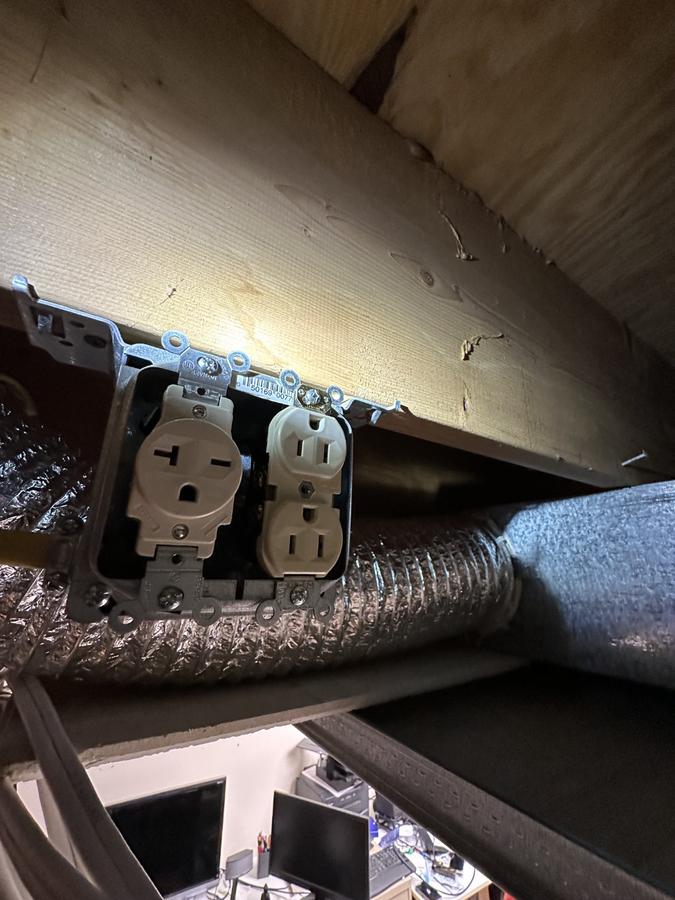 The XPA-11 is a beast. It could draw 2600 watts from the mains. I have been running on existing circuits for the system for the first testing phase.
The XPA-11 is a beast. It could draw 2600 watts from the mains. I have been running on existing circuits for the system for the first testing phase.
I roughed in a 20 amp 220-volt dedicated circuit for the design, with a standard 110-volt duplex outlet for the rest of the system and a 20 amp 220-volt socket for the amplifier. I firmly believe in providing as clean of power as I can. Also, the higher voltage reduces the peak current. This added about $110 to the system cost and about 2 hours of work.
Quick — Find a 12-channel DAC
In 2022 you cannot go to your local audio store and pick anything other than a two-channel DAC! But you can reach out to the world of Pro Audio and find Audio Interfaces that have many analog outputs (AKA DACs)!
After a few weeks of fussing around the internet and bothering the folks at Sweetwater, I purchased a MOTU 24AO, and the MOTU AVB ethernet network switch:
I will not delve into the depths of AVB and the 24AO, which will be an entire article that I may need to take a class and pass a test before I am qualified to write it.
After initial setup, I am using the USB interface from the Mac to the 24Ao. There are a few bumps, but it worked great with Apple Music out of the box. Well, at least the VU meters moved!
The Hookup: Audioquest in the house
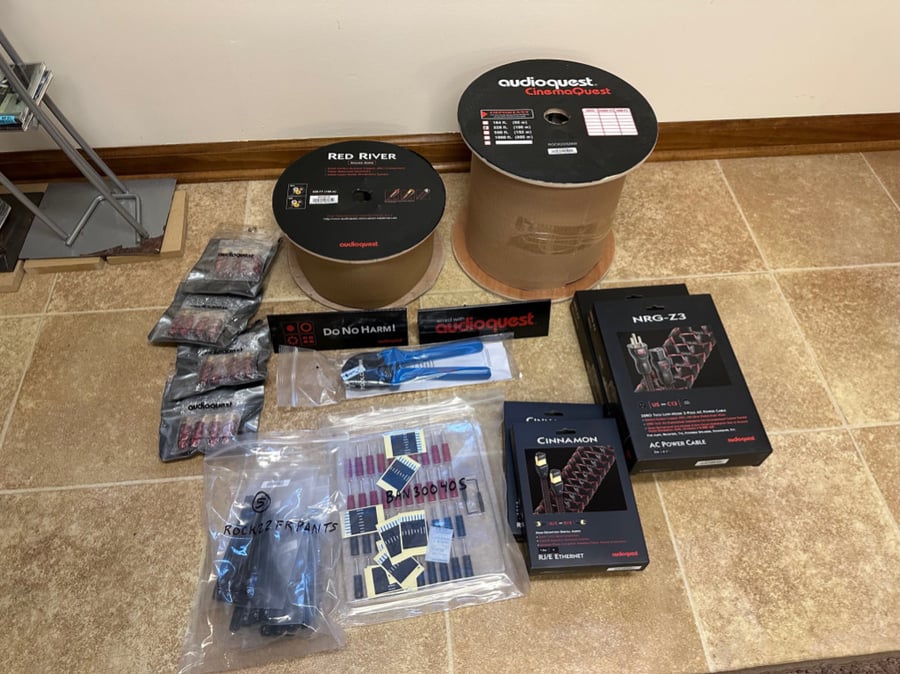 To save a surprising amount of money, I have hand wired all of the cables. There are twelve speakers. Twelve balanced connections to the amplifier with three wires.
To save a surprising amount of money, I have hand wired all of the cables. There are twelve speakers. Twelve balanced connections to the amplifier with three wires.
Working with Audioquest to select the correct cabling, we chose the Rocket 22 speaker cable, and their series 300 banana plugs. Also, there is Red River interconnect cable with matching XLR connectors. There are 236 feet of raw speaker cable and 114 feet of interconnect. If you do this, get a label maker and label both ends of all the wires. Take notes, pictures, etc.
I chose to use the Phoenix connectors on the MOTU 24AO instead of trying to solder all the DB-25 connectors. Ultimately, I wonder if I should have gone the other way.
Wiring twelve Red River interconnect cables with XLR on the amplifier end and the Phoenix connectors on the other.
The speaker connections were reasonably easy with the drop ceiling. The wire is heavy and very flexible, so I struggled with getting the cables across the tiles.
Note the labels!
Issues, Mistakes, Mis-steps
I made three minor mistakes during the last leg of the race to speaker install day. I had a loose connection on one phoenix connector. I accidentally used a couple of female XLR connectors. I reinstalled two ceiling panels the wrong way, so the holes for the speakers were blocked by floor joists.
On speaker install day, I misconnected one ceiling speaker. It was shorted. And, we found out that the MOTU output level is way too high for the Emotiva inputs. I scared myself to death. Twice! Emotiva and one of my Dynaudio Emit 50s were both OK, and my adrenalin levels dropped quickly.
COMPUTER! — — COMPUTER!
I am using an M1 Mac mini as the brains of this system. The M1 systems are real workhorses. Since Apple Music is the only streaming service that supports Dolby Atmos on the desktop, that is the core of this system.
I am a huge fan of actually having the music I am listening to in my local library. I want to pay the artist for their music. I want simplicity. I must adapt to a UI/UX throwback in JRiver and overly modern with Apple Music for discovery and lossy Dolby Atmos. Yet they serve the need rather nicely. I have canceled Qobuz, and Tidal will be next. I have a Blu-ray drive connected to the Mac mini and am learning to rip Blu-ray disks. There is also an OWC Thunderbay 8 with 14TB of storage. No, you do not need the Thunderbay 8.
Software settings for playback of 12 channels of audio (7.1.4)
Install the MOTU software for the MAC and run the discovery program. Connect the 24AO to the Mac via USB. I set the 24AO to show 12 channels in the order that Apple Audio Midi defaults with:
Using Audio Midi select the 24AO device and change the speaker layout to 7.1.4
For Apple Music, change the default device to 24AO. Remember not to put system sounds, etc., on the 24AO. Limit the notifications, etc., on the machine. Turn off stuff like answering your phone and messages.
In Media Center 30:
Set the Volume control to internal and the Core Audio settings to exclusive and max the software and hardware buffers
In the DSP settings, make sure everything is turned off. MC30 was turning on the Output Format.
Alignment and Placement
The initial alignment was primarily speaker placement and subwoofer level matching Emit 50 mains. In Dolby Atmos, there is no crossover to worry about. The system is physically aligned by distance with a laser measure. The levels are fixed and equal. I had to use the Trim controls in the MOTU to drop the output level to protect the system until I got twelve Shure in-line attenuators. That hurt the budget quite a bit.
Optimization and extension
As the snow starts flying, my wife’s car is back in the garage. I am polishing off the bathroom remodeling punch list, closing work issues, and listening to music. I will soon start working with Mitch Barnett to use Accurate Sound DSP Convolver and room correction filters. Now, where is that Windows laptop?
I also plan to test with the Topping DM7 DACS when they become available. They present a slightly different approach and a couple of challenges I must explore. The cost is on par, but they can convert a broader range of audio formats.
Well, Bob, How Much?
I was going to include a full breakdown of the system costs. I even built a spreadsheet. I decided not to have the complete study here. The system list is in my profile.
** NOTE: I purchased cable in bulk and only included the wire used. The costs of existing equipment have not been added here.
Ahh, Serendipity: Listening
These observations are based on limited time spent in the listening chair. I have only had the system functional for about a week, and I added the dedicated AC power connection 72 hours ago! I am still fussing over the remote control from the listening position. All the gear in the system is new, and I am sure breaking in.
I have a seemingly random list of tracks I listen to as part of a system test to see what a system sounds like. The playlist was on Qobuz, and I am moving to Apple Music, so it is getting a makeover.
During the speaker install, we mostly listened to Dolby Atmos tracks. Since then, I have stepped back to see what two-channel sound is like. As John Quick from Dynaudio said, serendipity sometimes comes into play. The electronics in this system work together as perfectly as I have ever heard.
NOTE: Take all of the following commentaries in the context of “IN MY OWN HOME.”
I am now in a vastly different room with passive floor-standing speakers and a lot of amplifier power.
While listening in 2-channel, this system is as good or better than anything else I have had around. There is no room treatment other than a rug under my chair and the furniture in the room.
The system has a different signature than the Heavenly Soundworks 517s upstairs in the living room, with a lot of soft furniture and wall-to-wall carpeting. The 517’s present much lower frequencies for their size. Adjusting them to the sweet spot needs just a bit of finesse.
The EMIT 50 speakers are designed to be faced flat onto the room. Do not toe them in. The left-right spacing needs to be precise with the EMIT 50. Since the invention of the stereo, we have concentrated on building the illusion of music coming from a stage in front of us. Throw in some reverb or phasing to help that along, and you get the modern stereo presentation that audiophiles seem to crave. These speakers in my crazy room do that with aplomb. Tracks in Q-Sound, such as “The Ballad of Bill Hubbard,” are broader and more precise than I have observed before. Singers are “placed” where we expect them to be.
 I sat down last evening and listened to most of “BT: Electronic Opus” two-channel. I am on the right track here, building a system that can play multiple modes. This album is almost immersive in its own right.
I sat down last evening and listened to most of “BT: Electronic Opus” two-channel. I am on the right track here, building a system that can play multiple modes. This album is almost immersive in its own right.
Layer and instrument separation is excellent in a couple of familiar orchestral productions. Several female vocal performances I have listened to make you think the center channel is playing!
I am thrilled with the 2-channel performance and highly recommend you listen to a pair of the EMIT 50s if you want something like them. I want to shake the hand of the designers and thank them. They went all the way to Jupiter (link 1, link 2) to design them.
As I am re-creating my 2-channel evaluation playlist, I am also finding Dolby Atmos tracks that I need on that list. Serendipity continues.
Note that Chris has started a new thread, Immersive Album of the Evening.
Immersive Audio has Arrived
Dolby Atmos listening
O.M.F.G.
The T.L.D.R.
We all know from reading the forum that Chris is an enthusiastic music fan. His excitement for Immersive Audio is effusive, contagious, and genuine. When he asked me to write about building a system, I jumped. My system and the first in a series of articles are a joy.
Just another quick note, Chris has created a section on the site for Immersive audio coverage: https://audiophilestyle.com/ca/immersive/
He has also created an Apple Music Playlist of Dolby Atmos music: Audiophile Style Atmos
The music in that playlist is lovely, and you can listen to it using only 2-channels because of Dolby Atmos.
I want to highlight a couple of albums from Dave McKendry and Moby:
These two albums reflect the movement from a flat wall 2-channel simulated projection created at a mixing station to a directly realized representation in 360 degrees. With Dolby Atmos, the artist can tell us what they intend with much greater freedom of expression. You have to experience this music. I cannot tell you what a wonder it is in words or pictures.
This is not about movie earthquakes vibrating your chair or a jet airplane from a Tom Cruise action movie screaming from one side of the room to another. Dolby Atmos also does that and so much more.
This is about bringing the experience of the symphony hall to your home or the sound of the small ensemble in the church into your own space with headphones or speakers.
For the first time, maybe, just maybe we can understand what the artist intended.
2-Channel Stereo is so Yesterday!
And we still need it.
I have outlined and assembled (with much help and support) the most straightforward Dolby Atmos Immersive Audiophile system that I can currently devise. There are three core components:
One Computer M1 Mac mini $900
One DAC MOTU 24AO $1000
One Amplifier Emotiva XPA 11 $2200
You need eleven passive speakers and one powered subwoofer to make an Immersive system. With the XPA-11, you can drive just about anything. (Technically one can use 8 speakers in a 5.1.2 configuration up to 16 speaekrs in a 9.1.6 configuration, but 7.1.4 is the sweetspot. - CC)
With an internet connection and an Apple Music subscription, you have instant access to the second-best-sounding source of Dolby Atmos music with no extra work; it is just there to play 24 hours a day.
As noted above in detail, the speakers I am working with are the new EMIT series from Dynaudio.
You will need cables. I will avoid the argument and let those afflicted with skepticism buy Amazon Basics. So pick a number for cabling and go with it.
There are many details about operating the system from the listening position—other software to mess with that I will cover as we go forward. Having an iPad around is handy.
I am using Apple Music and JRiver Media Center for playback. Apple Music can stream its Spatial Audio with Dolby Atmos to most Apple devices, including the Mac. The iTunes remote app still works but has not been updated in two years, and I am having trouble syncing the playlists.
I have ordered a Luna Display adaptor to operate the Mac remotely from the listening position.
JRiver has my library of 2-channel tracks and a second library with Dolby Atmos TrueHD tracks extracted to WAV files in 7.1.4 format. With JRiver, I can use JRemote.
NOTE you can only use one of the apps at a time as JRiver or Audirvana take exclusive control of the audio device.
There you go. The ball is in your court. Open your mind and learn more. Look for others that are traveling this road. I fully intend to proceed further.
So it is up to you to:
Finally, the Emit 25c as an Homage to WALL-E





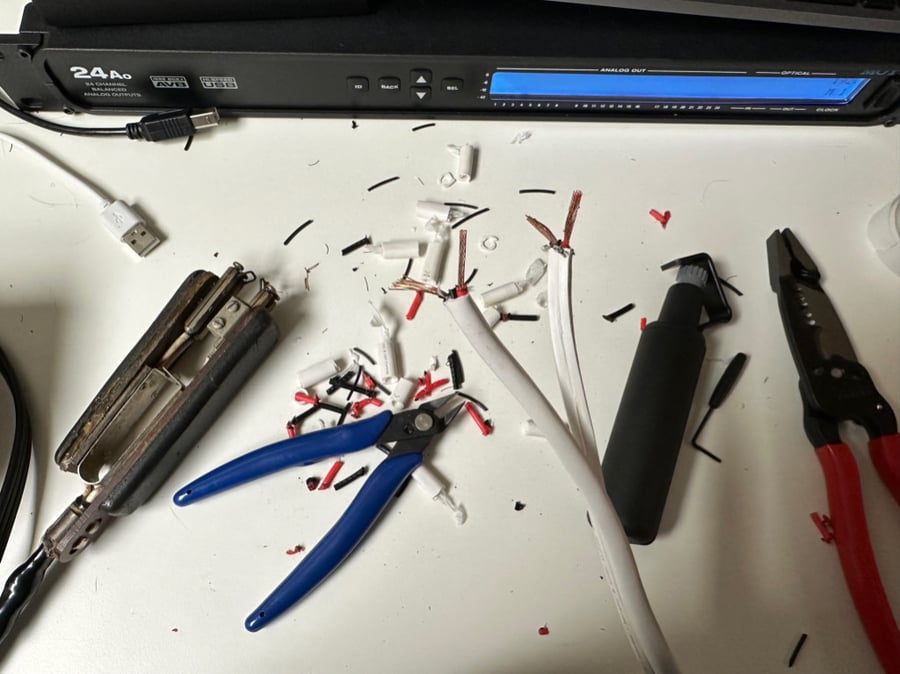
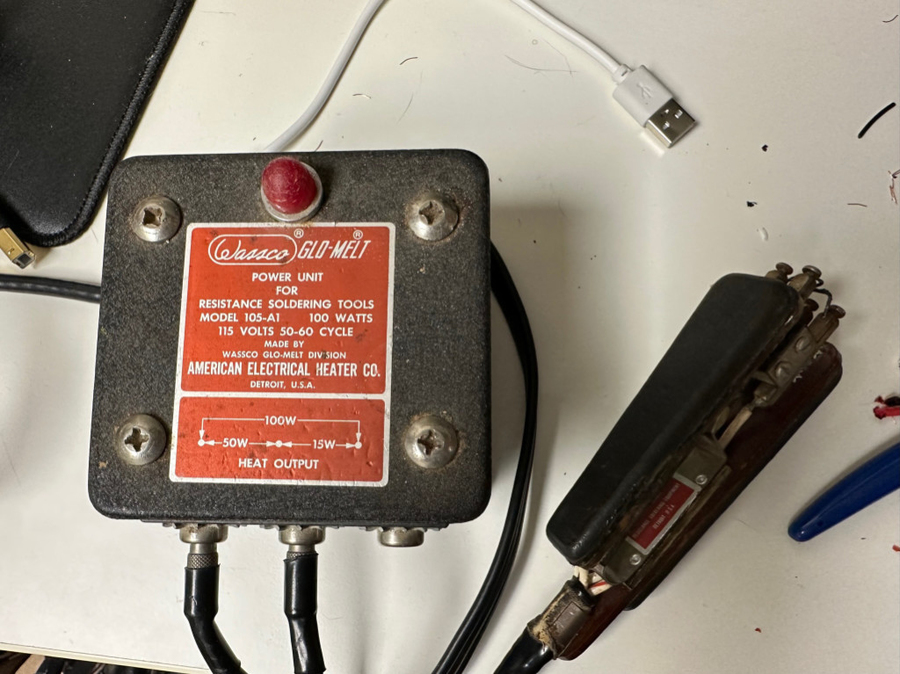

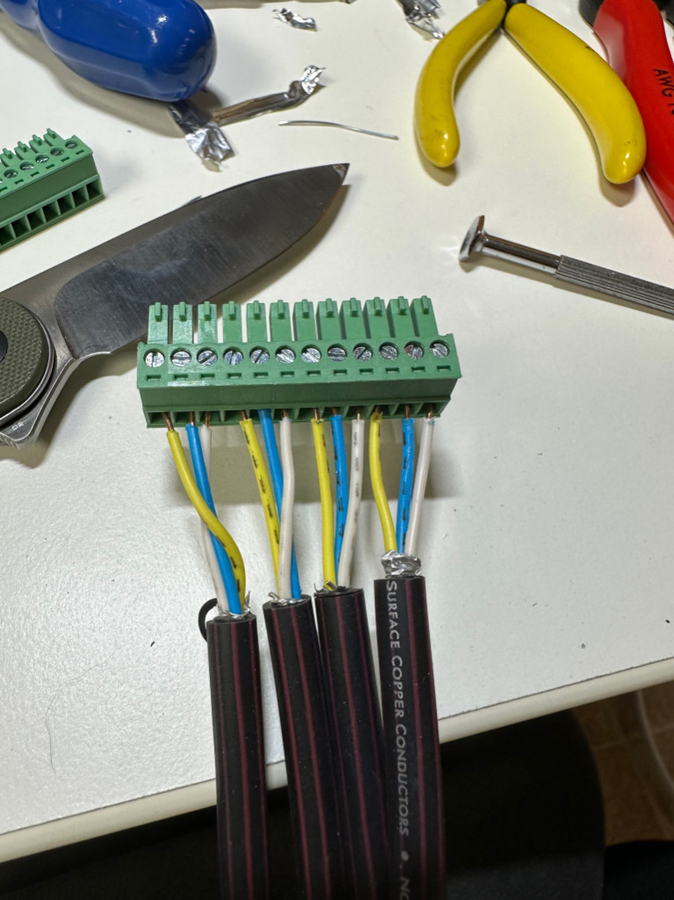
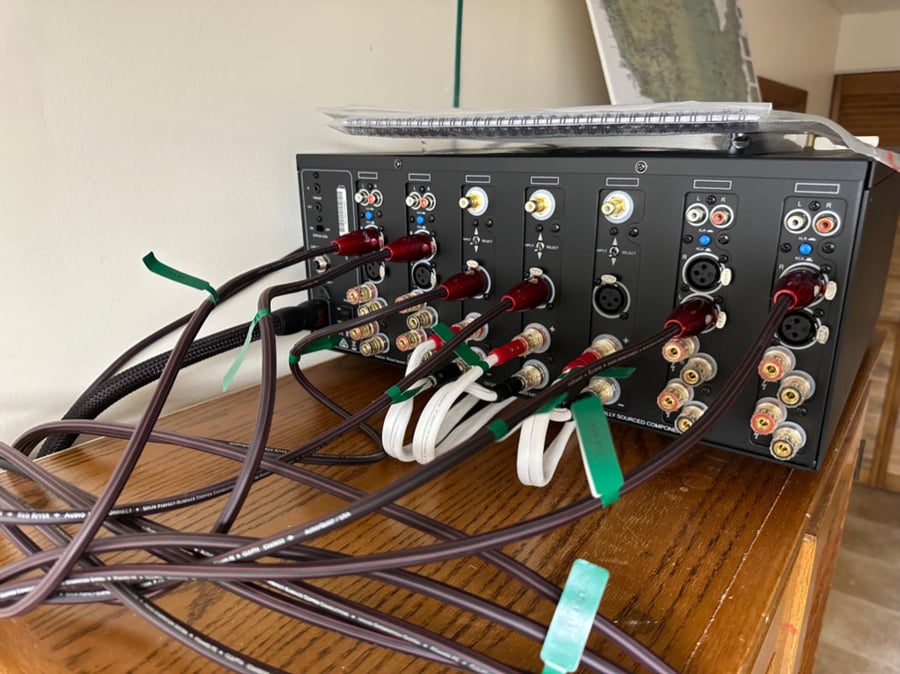



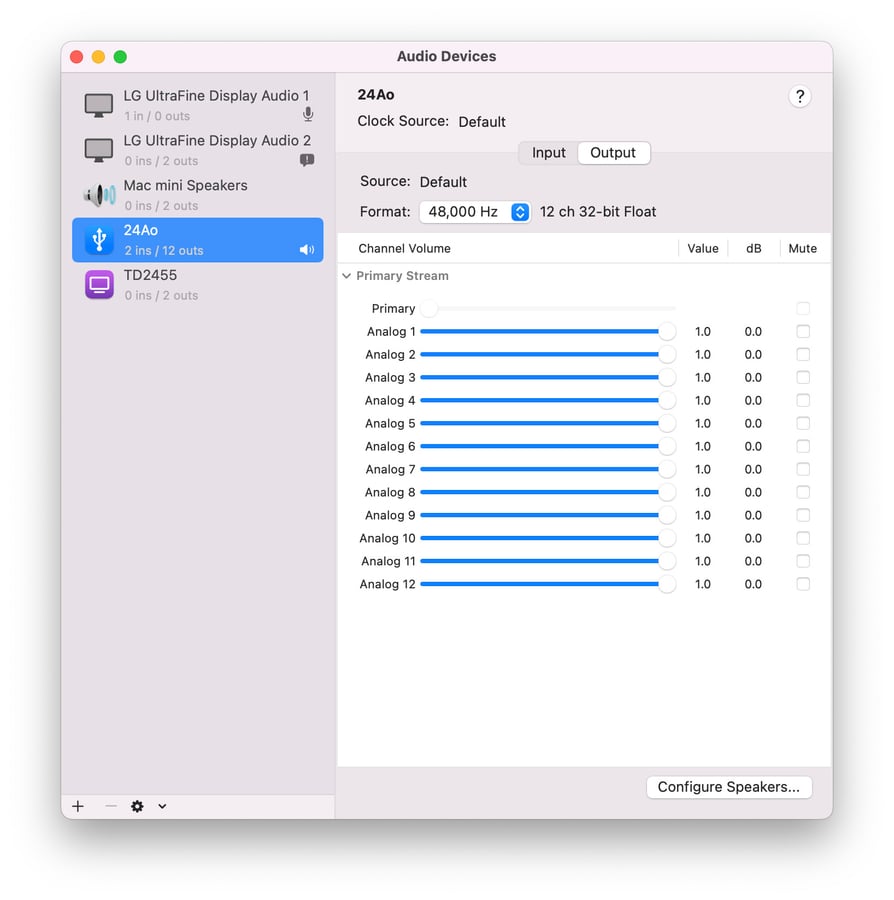




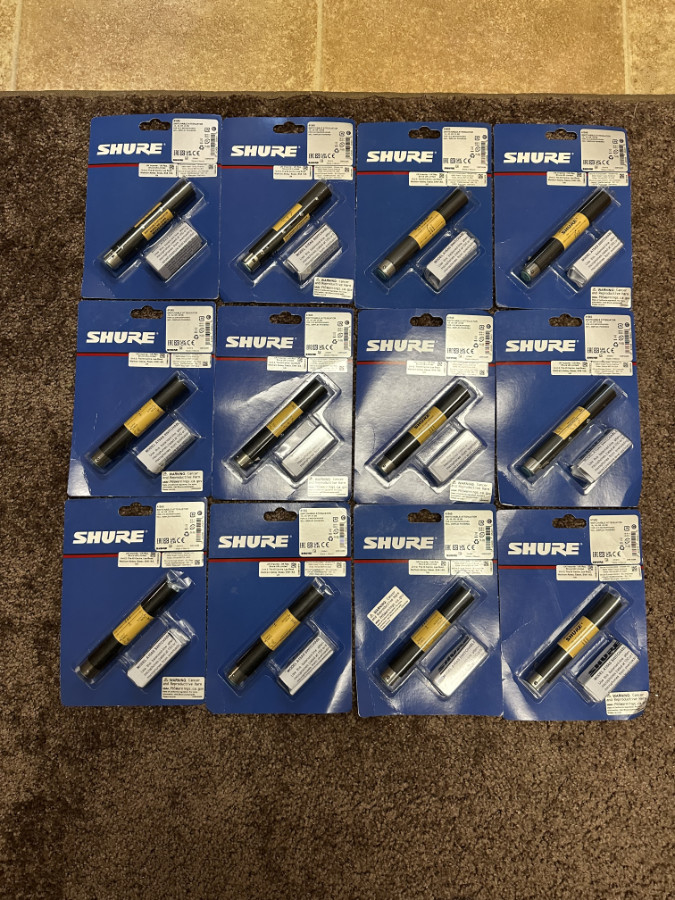

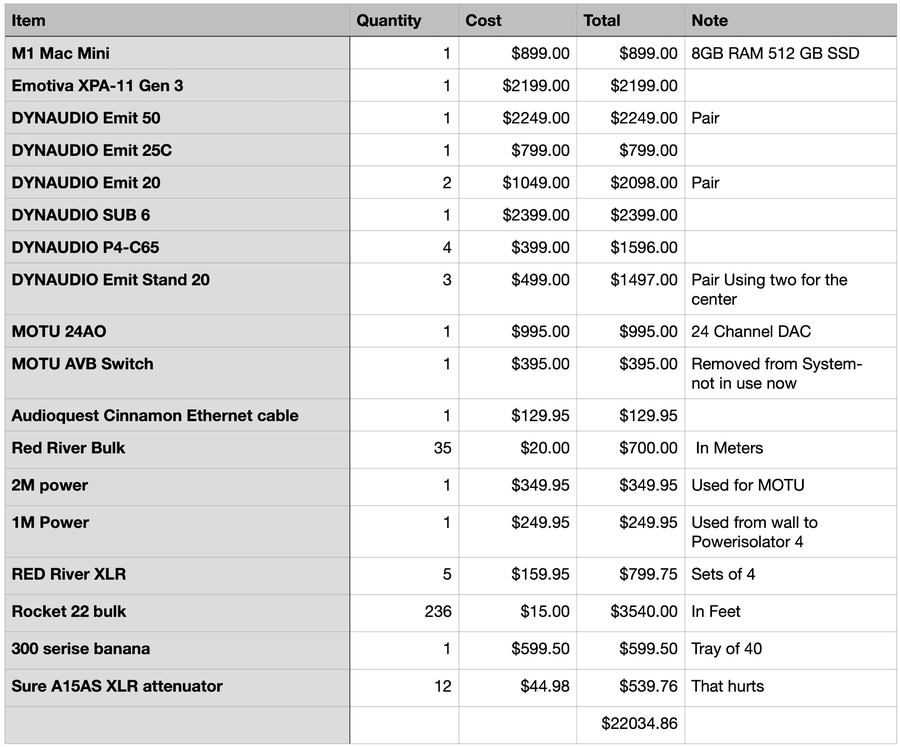


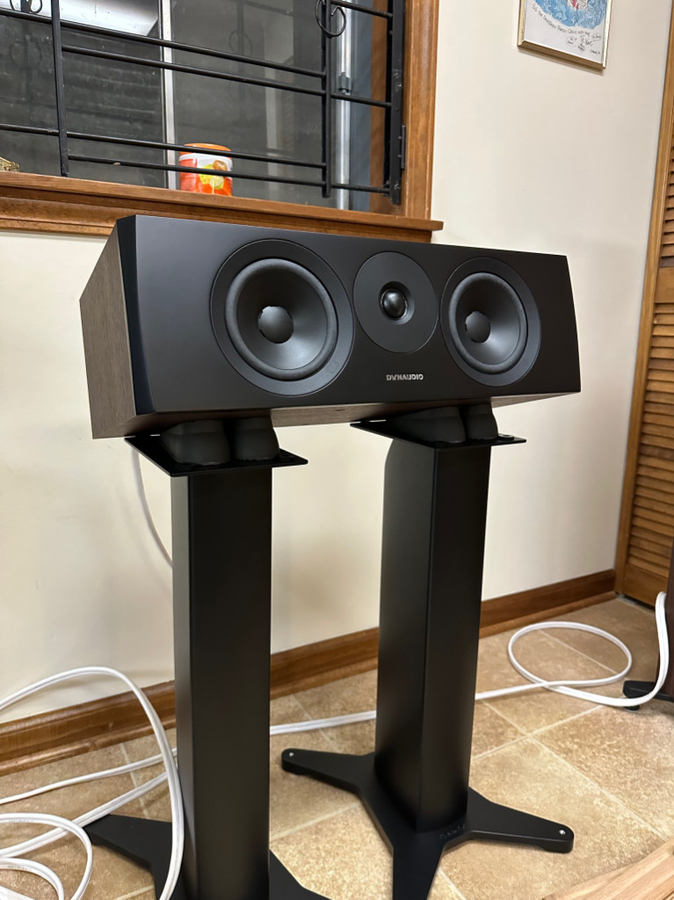












Recommended Comments
Create an account or sign in to comment
You need to be a member in order to leave a comment
Create an account
Sign up for a new account in our community. It's easy!
Register a new accountSign in
Already have an account? Sign in here.
Sign In Now